Experience a diverse portrayal of water and the moon, transforming with the seasons, through the former Imperial collection of calligraphy, paintings, and decorative arts.
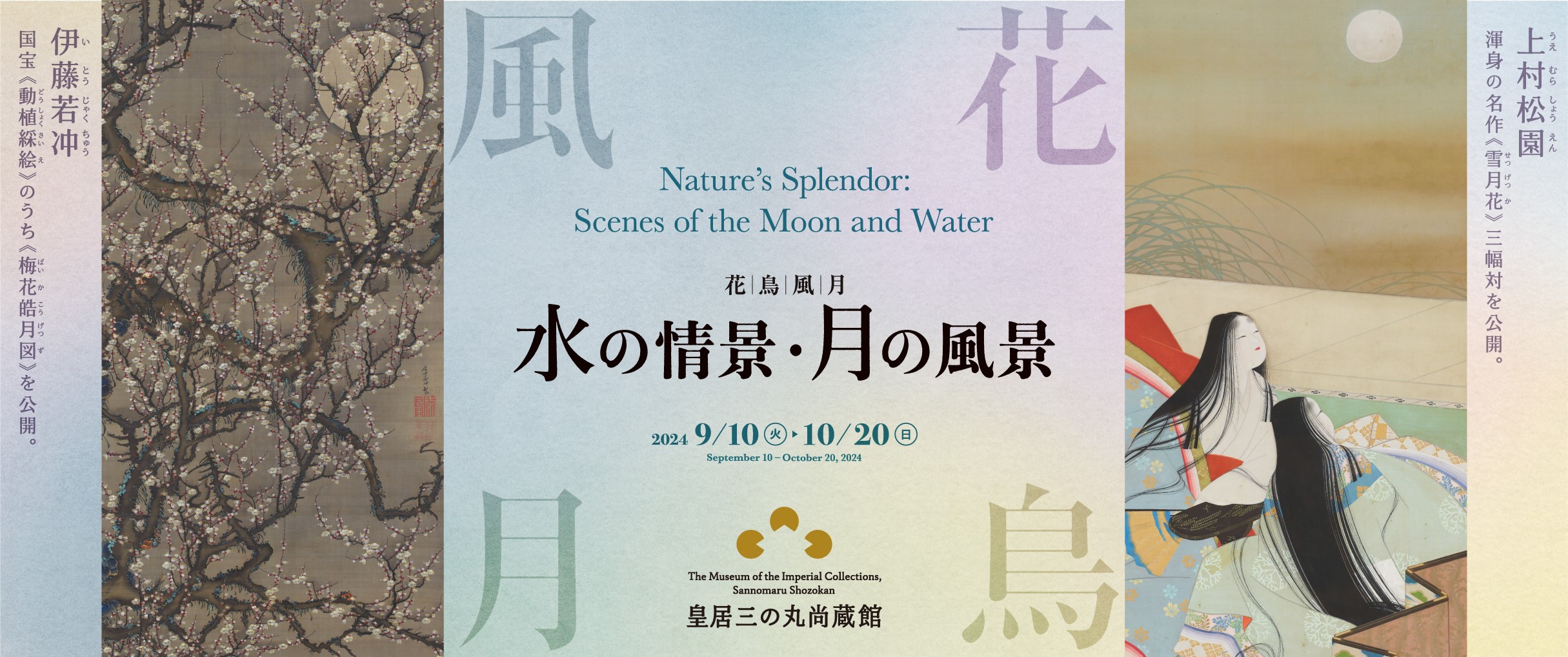
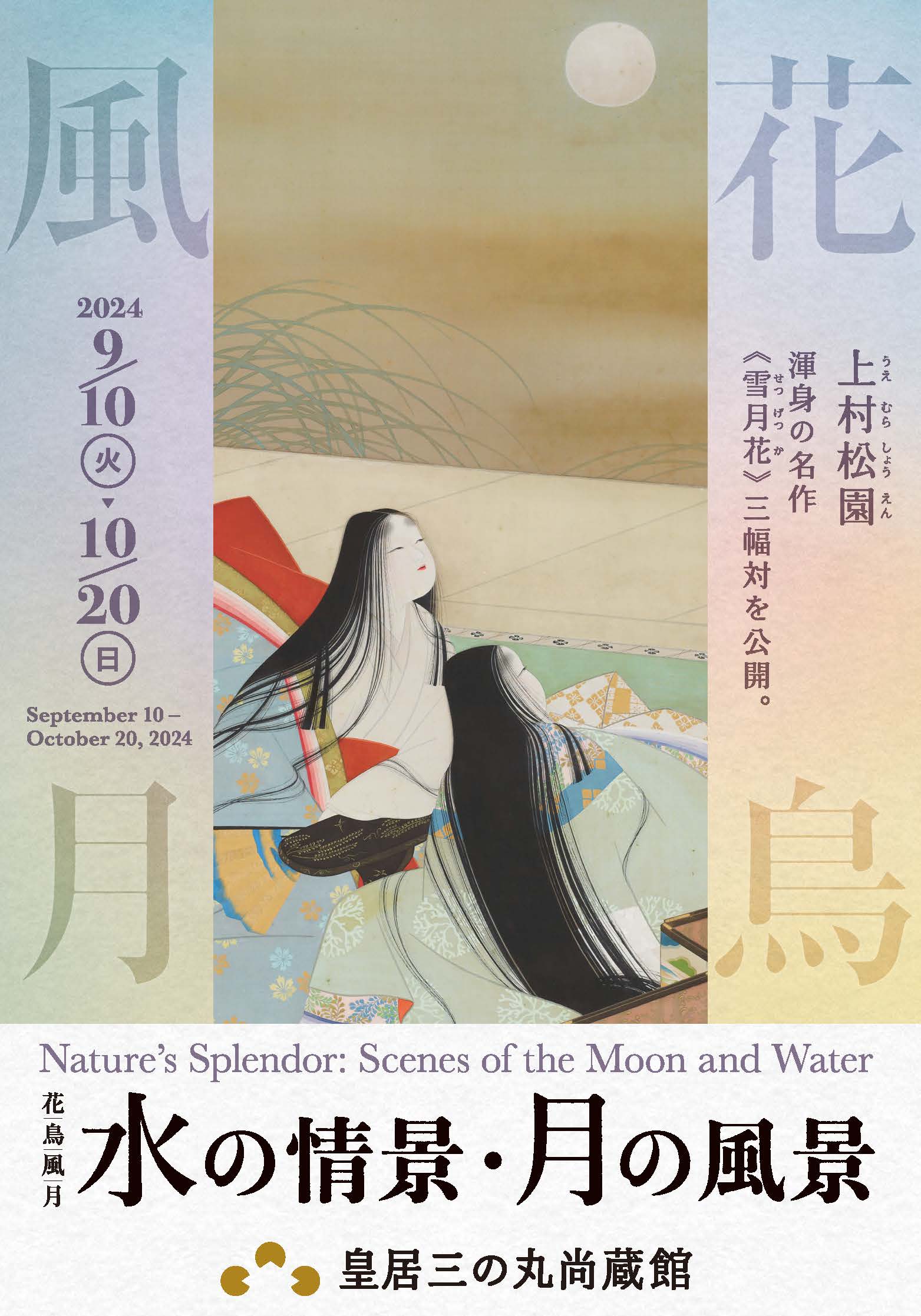
The Museum is pleased to present Nature’s Splendor: Scenes of the Moon and Water, an exhibition exploring the beauty of the natural world through the lens of two of its most admired subjects.
Scenes of nature and the four seasons have long inspired Japanese artists, with water celebrated in art and verse for its life-sustaining qualities. Rain is revered as the “mother and father of flowers,” nourishing plants as it falls. As precipitation accumulates, it flows into rivers that swell into waterfalls before returning to the sea in a continuous, life-giving cycle.
Historically, the moon’s importance to humanity has rivaled that of the sun, serving as a marker for the seasons and the basis of lunar calendars. Texts from the Edo period (1615–1868) hailed the appearance of the moon in autumn, saying the season’s clear night skies allowed for the best views of the year.
Visitors are invited to view scenes of nature’s splendor brilliantly captured in these masterpieces preserved by the Imperial Household.
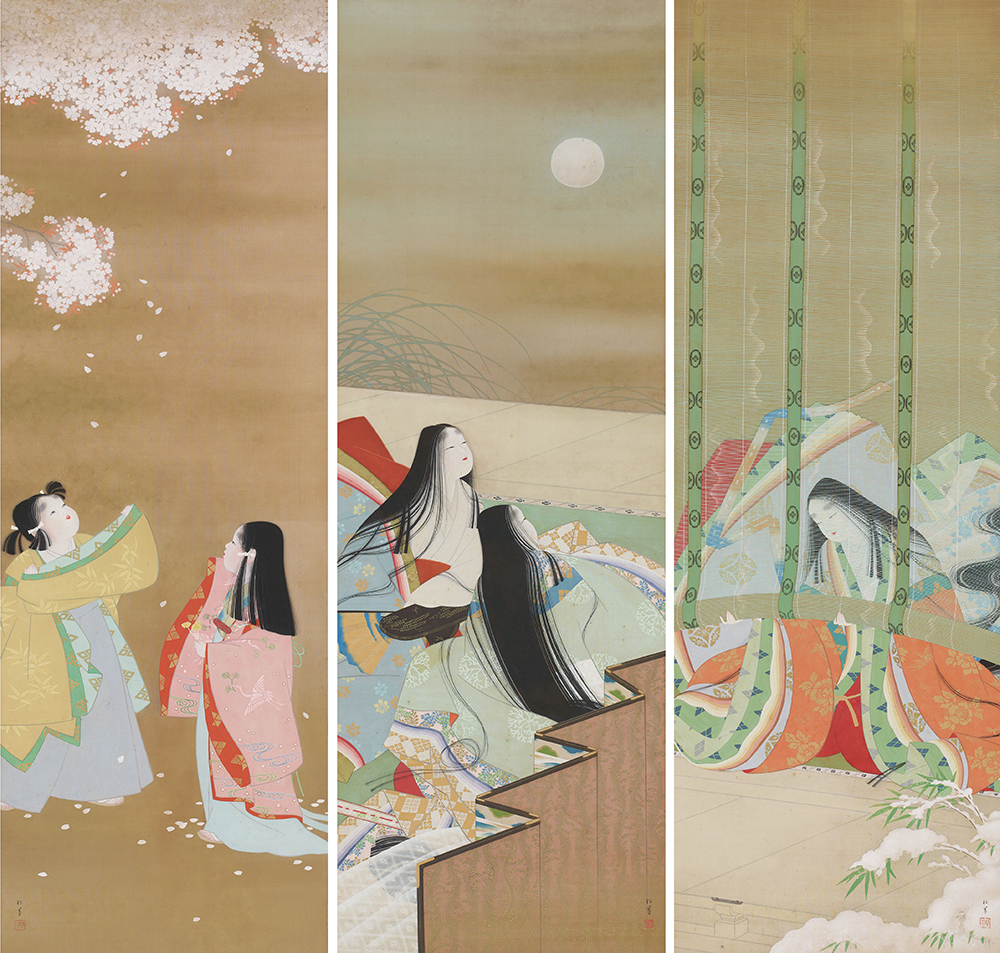
Snow, Moon, and Flowers
Uemura Shoen. Showa era, 1937
Experience a diverse portrayal of water and the moon, transforming with the seasons, through the former Imperial collection of calligraphy, paintings, and decorative arts.
Enjoy a curated selection of modern Japanese art, including works by prestigious Imperial Household Artists*, Unno Shomin and Namikawa Sosuke, as well as paintings by Kawai Gyokudo, Hashimoto Kansetsu, and Uemura Shoen.
*From 1890 to 1944, some of the distinguished masters of various art genres were appointed as “Imperial Household Artists.” This was to encourage artists who produced works of exceptional quality in traditional genres to preserve historic techniques.
Discover selected masterpieces from our collection, like Ito Jakuchu's "Colorful Realm of Living Beings"!
Many of the world’s earliest paintings and artifacts were inspired by nature. Perhaps humans were giving shape to those things they felt closest to or were most essential in their lives. Celestial objects and weather phenomena appear often in such works, conceivably as familiar sights or for their religious significance. In Japan, decorative interior furnishings often incorporated the moon and water in designs alluding to classical subjects, like the popular Eight Views of Xiaoxiang from China or an image of the moon reflected in the surface of a lake at Ishiyamadera Temple—a scene that allegedly inspired Murasaki Shikibu while writing her novel The Tale of Genji. This section presents lacquerware, metalwork, and other decorative arts from the 1700s to early 1900s that offer renderings of rain, waterfalls, and the moon.

Shelf with Eight Views of Omi Province
Edo period, 18th century
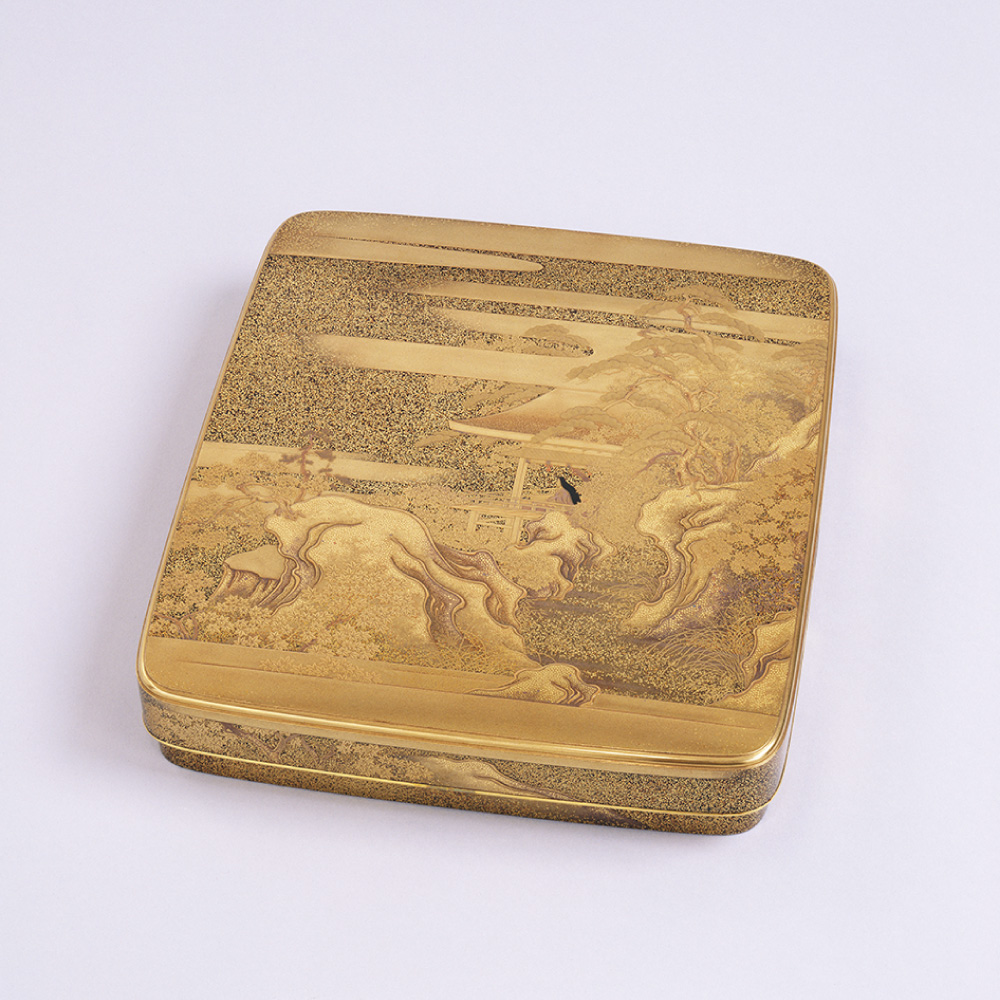
Writing Box with Scenes of Ishiyamadera Temple
Kawanobe Itcho. Meiji era, 1899
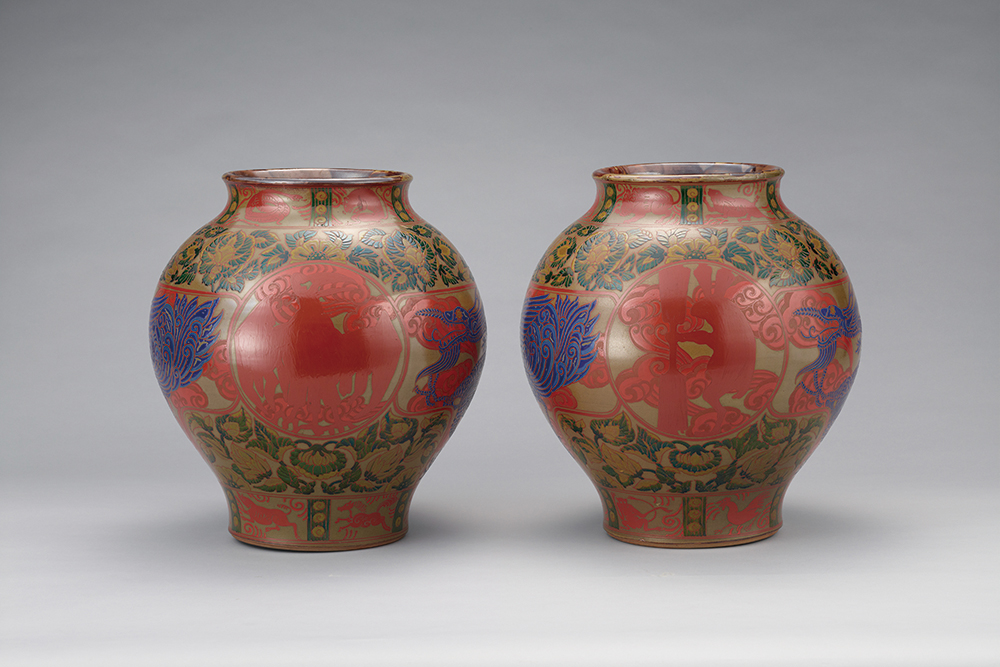
Pair of Vases with the Sun Crow and Moon Rabbit
Banko ware. Taisho era, 1915
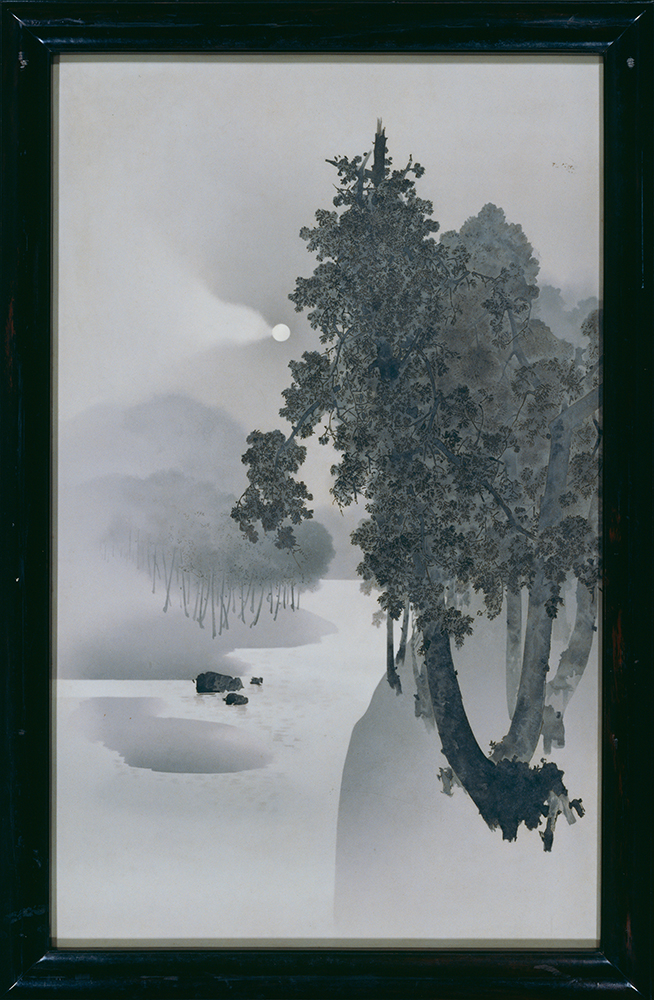
Moonlit Night Deep in the Forest
Namikawa Sosuke. Meiji era, 1899
A vibrant legacy has survived in art and verse celebrating the beauty of the moon and water in the four seasons. In the genre of painting, many historical works rendered on silk and paper have been preserved in Japan. Calligraphy has a long history as well, with early courtiers adopting a combination of Chinese characters and domestic kana syllabaries to produce myriad forms of written expression, like Chinese poems and waka poetry. This section introduces calligraphic works and modern paintings that were presented to the Imperial Household, or purchased directly, that depict scenes of rain, waterfalls, and the moon in seasonal settings. Rich in variation, these idyllic images capture the ever-changing face of nature over the passage of time and the turning of the seasons.

Snow, Moon, and Flowers.
Uemura Shoen. Showa era, 1937

Morning Dew (left screen from a pair)
Hirafuku Hyakusui. Taisho era, 1915
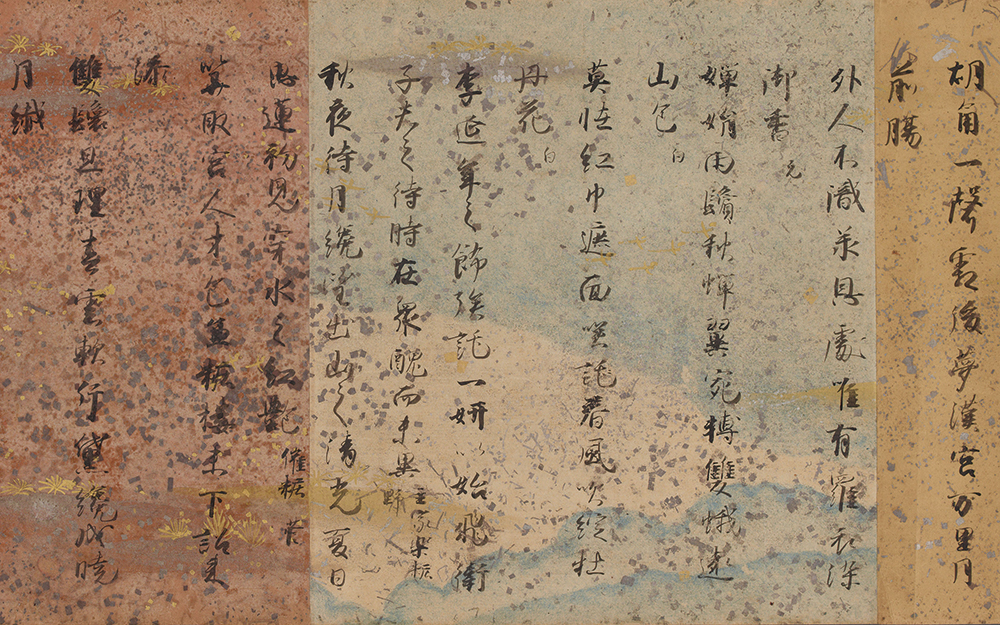
Collection of Japanese and Chinese Poems to Sing (Atakagire Version)
Attributed to Minamoto no Toshiyori.
Heian period, 12th century
(Different sections on view over two rotations.)
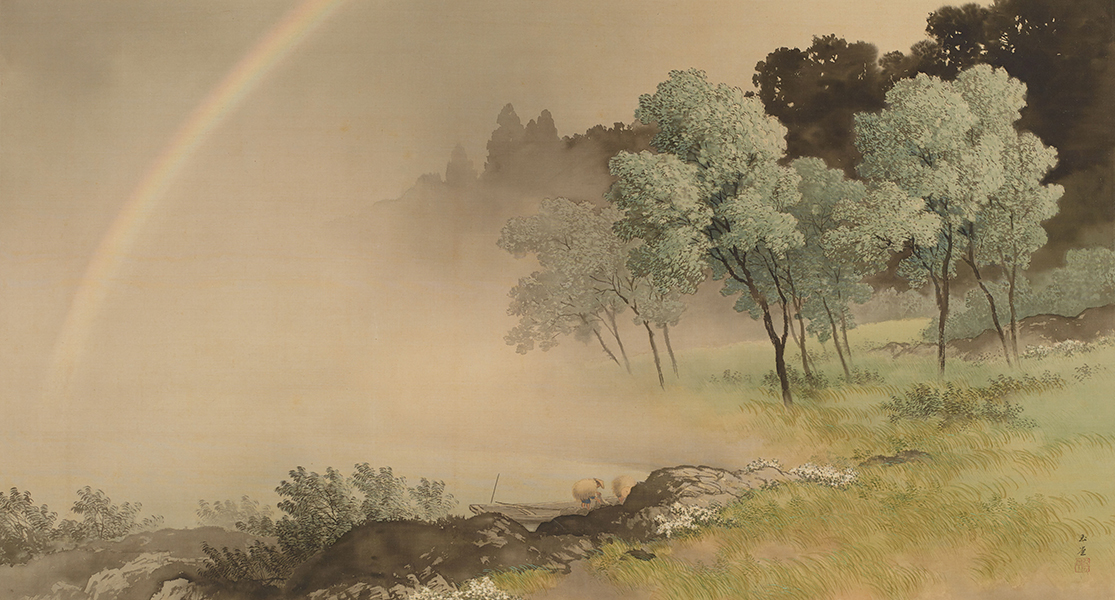
After the Rain
Kawai Gyokudo. Taisho era, 1924
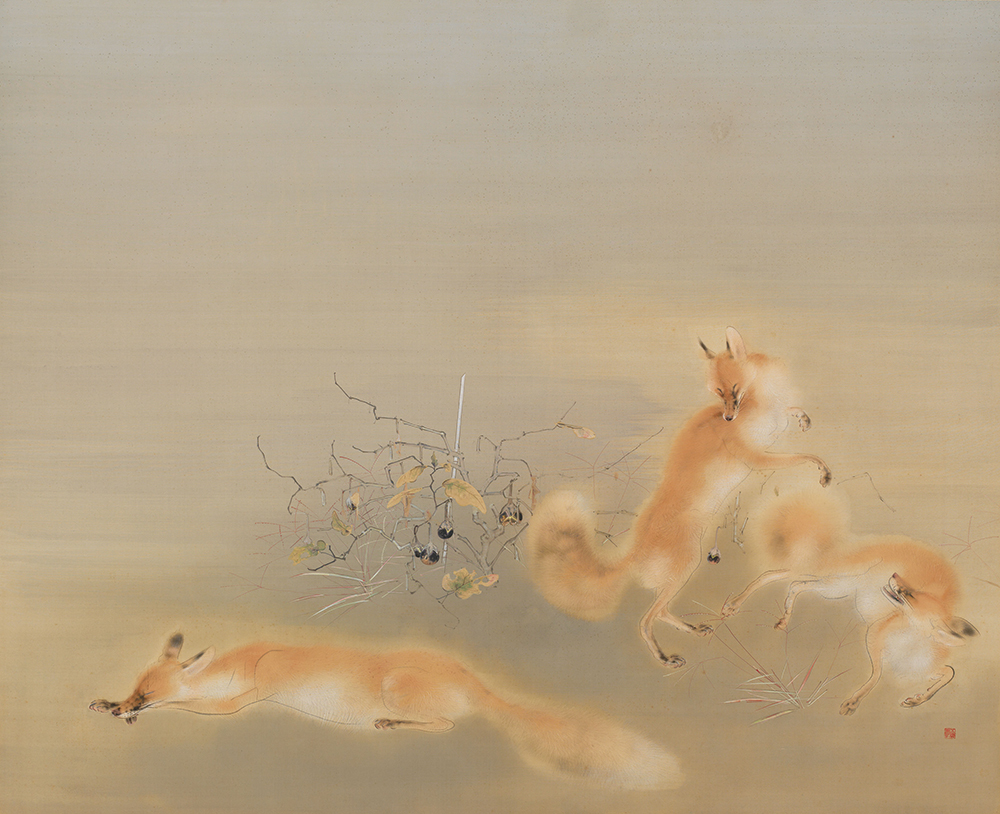
Autumn Eggplants and Foxes
Nishimura Goun. Showa era, 1932
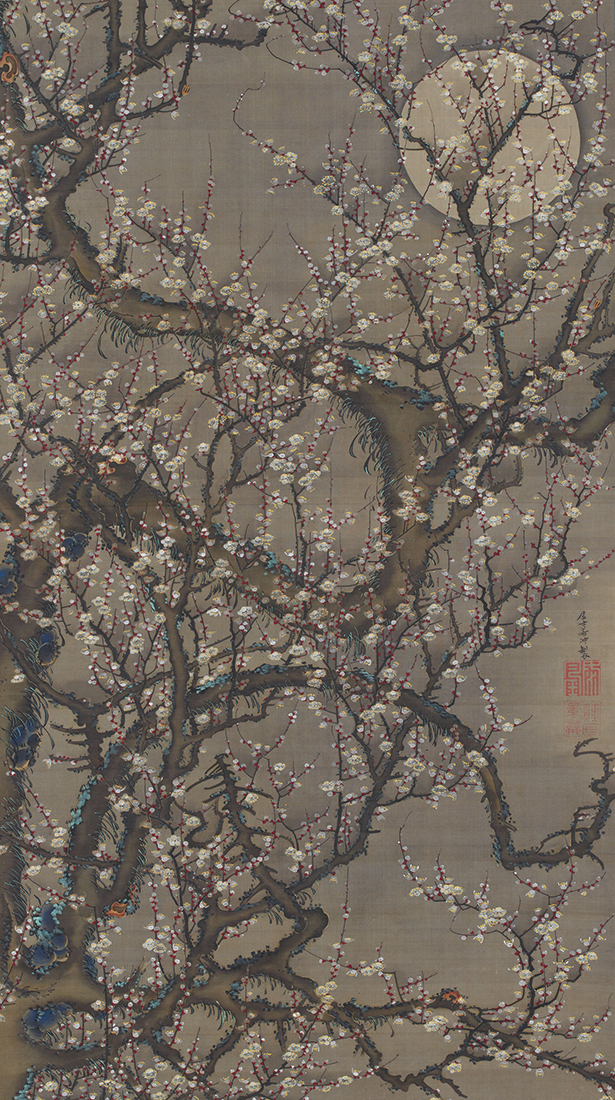
“Plum Blossoms and Moon”
from Colorful Realm of Living Beings
Ito Jakuchu.
Edo period, 18th century (National Treasure)
*All works included in this exhibition are housed in the Museum of the Imperial Collections, Sannomaru Shozokan.
Exhibition
Nature’s Splendor: Scenes of the Moon and Water
Exhibition Dates
Tuesday, September 10–Sunday, October 20, 2024
Closed
Mondays; September 17, 24, and October 15
Exceptionally open on Mondays: September 16, 23, and October 14
(When a national holiday falls on a Monday, the museum will be closed the following Tuesday instead.)
Subject to change.
Hours
Admissions
Adults: ¥1,000 University students: ¥500
*Free admission for high school students, visitors under 18, and visitors aged 70 years or more. Please show valid ID or other documentation.
*Visitors with disabilities (along with the one assistant) will be admitted for free without a booking.
Number of objects in the exhibition
27 works (All housed in The Museum of the Imperial Collections, Sannomaru Shozokan.)
Organizer
The Museum of the Imperial Collections, Sannomaru Shozokan
Venue
The Museum of the Imperial Collections, Sannomaru Shozokan
1-8 Chiyoda, Chiyoda-ku, Tokyo, 100-0001 (within the Imperial Palace East Gardens)
[Museum website] https://shozokan.nich.go.jp/en/
[Instagram] https://www.instagram.com/shozokan_pr/
Official account @shozokan_pr
Tel.
+81 (0)50-5541-8600 (NTT Hello Dial Service)
Press Inquiries
Public Relations Office (within Kyodo PR) of The Museum of the Imperial Collections, Sannomaru Shozokan
Contact: Ms. Mitsui
10th Floor, Ginza Shochiku Square, 1-13-1 Tsukiji, Chuo-ku, Tokyo, 104-0045
Tel: +81 (0)3-6264-2382
E-mail: shozokan-pr@kyodo-pr.co.jp
The Museum of the Imperial Collections, Sannomaru Shozokan
1-8 Chiyoda, Chiyoda-ku, Tokyo, 100-0001 (with in the East Gardens of the Imperial Palace)
Subway Lines: 5-minute walk from Otemachi Station (Exit c13a)
JR Lines: 15-minute walk from Tokyo Station (Marunouchi North Exit)
◎ Hirakawa-mon Gate >>>
Subway Tozai Line: 10-minute walk from Takebashi Station (Exit 1a)
◎ Kitahanebashi-mon Gate >>>
Subway Tozai Line: 15-minute walk from Takebashi Station (Exit 1a)
*Hirakawa-mon Gate and Kitahanebashi-mon Gate are closed on Fridays and when the East Gardens of the Imperial Palace are closed.
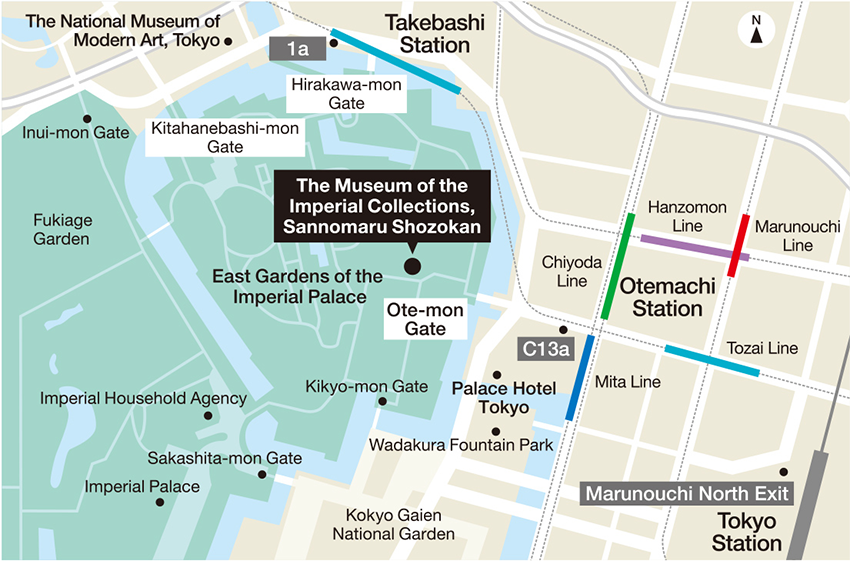
In 1989, His Majesty the Emperor Emeritus and His mother Empress Kojun gifted a substantial collection of art to the nation of Japan that had previously been passed down by the Imperial Family. In November 1993, the Museum of the Imperial Collections was established in the East Gardens of the Imperial Palace in order to conserve these works, discover more about them through research, and make them accessible to the public.
The Museum’s collection spans diverse genres, including calligraphy, painting, and decorative arts. Visitors can view many iconic, celebrated works from each period of Japan’s history as well as pieces from around the world that have been gifted to members of the Imperial Family.
Since 2019, construction has been underway to expand the Museum’s storage and exhibition spaces and allow it to pursue a broader range of initiatives. Also, the Museum’s administration was transferred from the Imperial Household Agency to the National Institutes for Cultural Heritage in October 2023 to roughly coincide with the Museum’s partial reopening on November 3. A full reopening is planned for 2026.
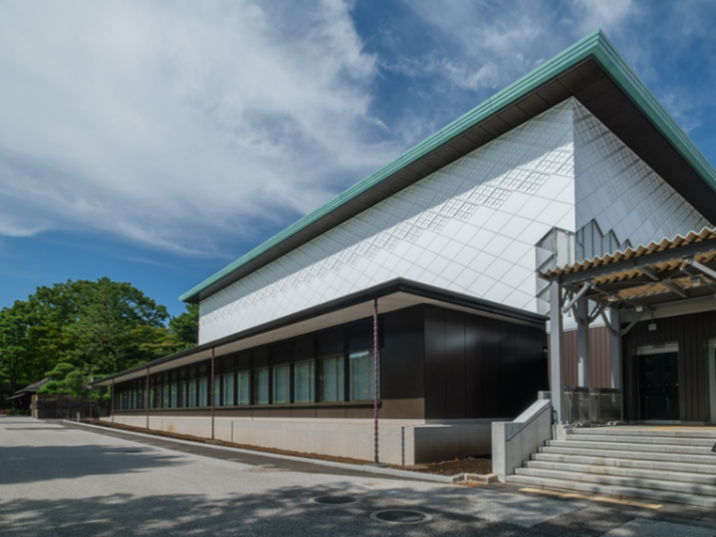
The Museum exterior
For the latest information, please visit the Museum website or
call at +81 (0)50-5541-8600 (NTT Hello Dial Service).